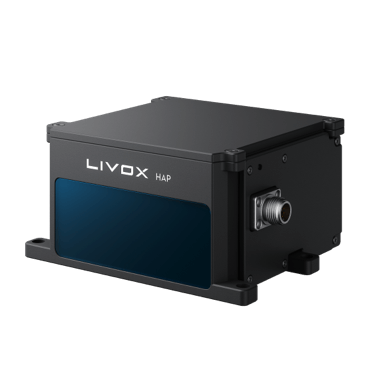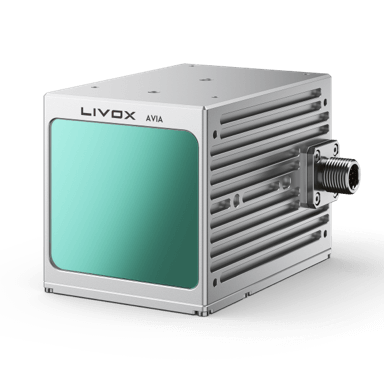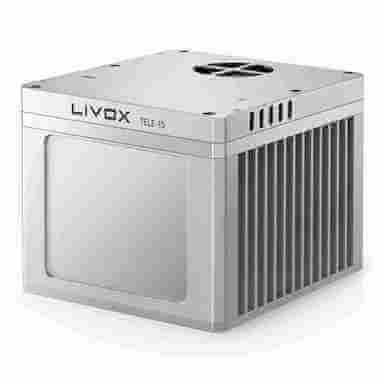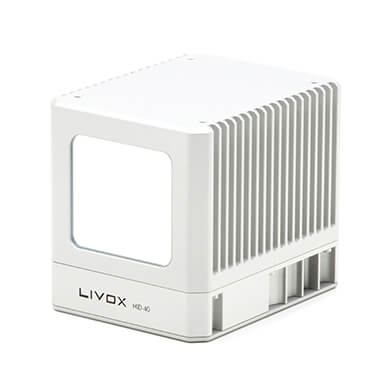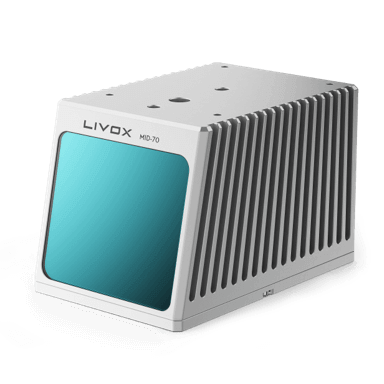Livox Showcase
Use Cases | 3D Volumetric Measurement for Warehouses
2022-11-7In the logistics and warehousing industries, determining the volumes and quantities of materials and their inbound and outbound status is vital for the management of production inventory.
In the logistics and warehousing industries, determining the volumes and quantities of materials and their inbound and outbound status is vital for the management of production inventory.
Traditionally, this is done manually. For example, in coal warehousing and production, the volume of coal is typically measured with a total station held manually by a human operator. However, such conventional solution comes with constant challenges, such as a lack of technical means, significant margins of error, low efficiency, and monitoring difficulties.

Inside a typical coal warehouse
In static scenarios such as those involving coal, rapid scanning is less of a priority. Therefore, users can maximize non-repetitive scanning by prolonging the scan duration of a Livox LiDAR, which delivers greater point cloud density and thus more granular data for clients.
It is this feature that has enabled our partners SF Technology and Wuyi Yuntong to address pain points in the coal industry, by developing intelligent measurement systems that generate accurate data and real-time updates.
Intelligent Inventory System | SF Technology
The accurate measurement of large bulk volumes has been a thorny issue in the coal industry for years. A coal pile usually weighs at least 10,000 tonnes, which means that a 1% margin of error in its measurement can lead to losses in the tens of millions of yuan. Evidently, improving the accuracy of bulk measurement is crucial to inventory management and the calculation of material consumption.
The traditional method of measuring large coal heaps involves the use of a total station and RTK spot measurement, along with manual extraction of features. In these instances, tall coal piles are usually difficult for human workers to climb up, thus making feature extraction incredibly challenging. Meanwhile, such operations are inefficient due to the low data density generated by spot measurement, which reduces the accuracy of coal volume measurements.
In response to this pain point, SF Technology developed an intelligent inventory system using multiple sensors such as Livox LiDARs and cameras. The system makes full use of LiDARs to accurately collect distance data for 3D modeling of targets, as well as AI algorithms to automatically calculate coal volumes and update them in real time. This enables users to control warehouse conditions easily and directly through the web interface.
The system can perform a range of functions such as completing a designated inventory plan, periodic data collection, automatic 3D point cloud generation, auto-splicing to create whole volume data, auto-calculation of bulk volumes in defined areas, and auto-generation of computation reports. As a result, it brings greater efficiency and accuracy to the automation of inventory management.

3D warehouse view

Real-time point cloud image of coal heaps
Warehouse Inventory Management | Wuyi Yuntong
Traditional measurement methods usually involve manual and regular stocktaking. Due to their limited detection range and measurement angles, data cannot be updated in real time effectively.
The solution adopted by Wuyi Yuntong utilizes LiDARs and gimbals, which assist operators in selecting the optimal roof equipment with a wider and more flexible and comprehensive coverage of a warehouse. By splicing multi-point cloud files, the entire inventory of a warehouse can be displayed in 3D, which enables dynamic and real-time exchange of information on its items. At the same time, the volumes of materials can be measured and computed intelligently and in real time by segmenting their point clouds through positioning and virtual fencing technology. With these features, users can gather and integrate comprehensive and dynamic data, to manage safety control as well as entry and exit of goods flexibly and precisely.

3D modeling of a coal warehouse
The above two solutions utilize point clouds from LiDARs to upgrade non-structured image data to structured 3D data. On top of delivering cost-efficient, rigorous, and precise volumetric measurements, they provide an effective monitoring function for avoiding risks of theft, and expand the scope of surveillance by increasing data dimensions. As a result, the solutions greatly enhance the real-time nature and deterrent effect of data monitoring, therefore marking a significant step forward in resolving the pain points of the coal industry.

